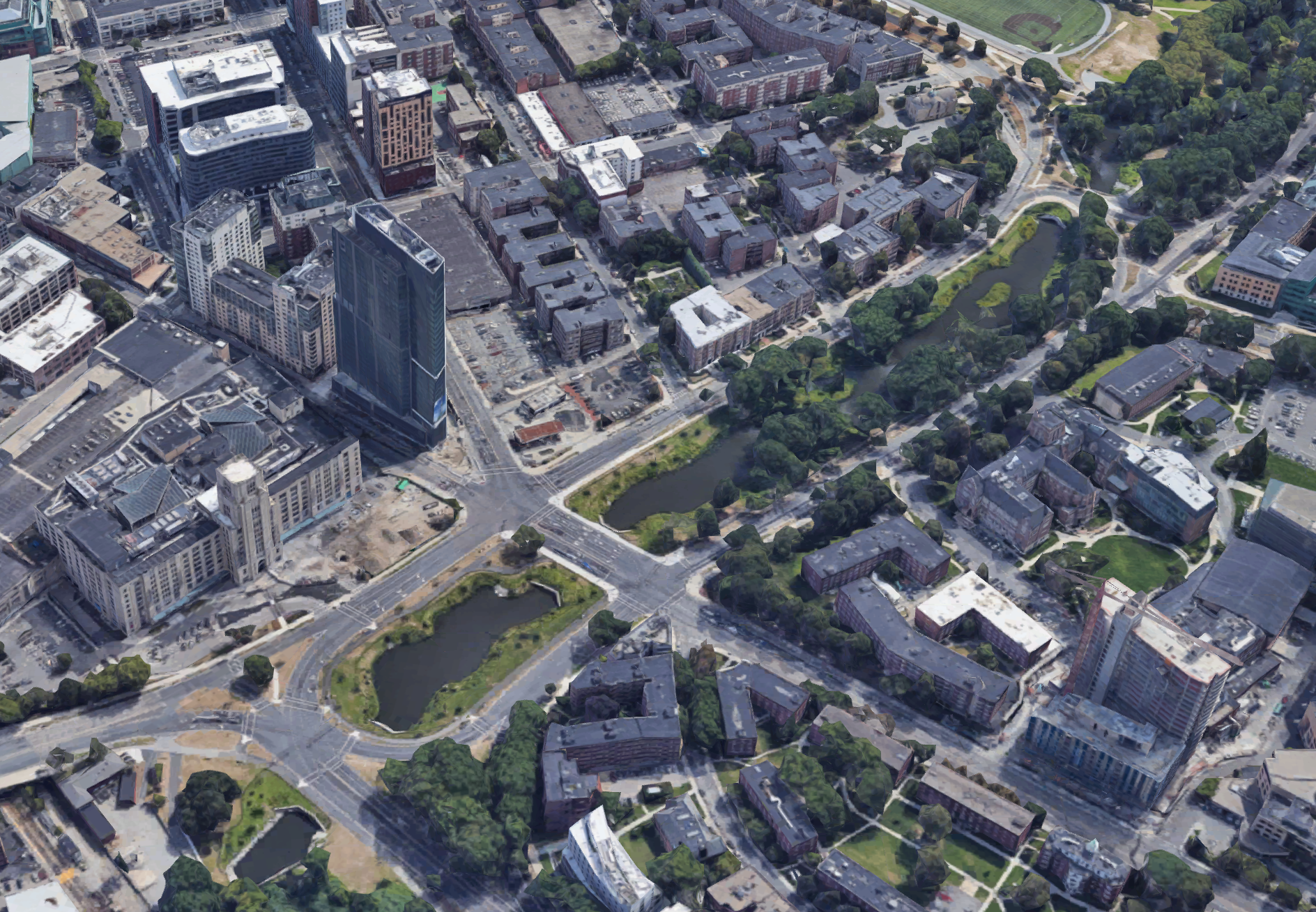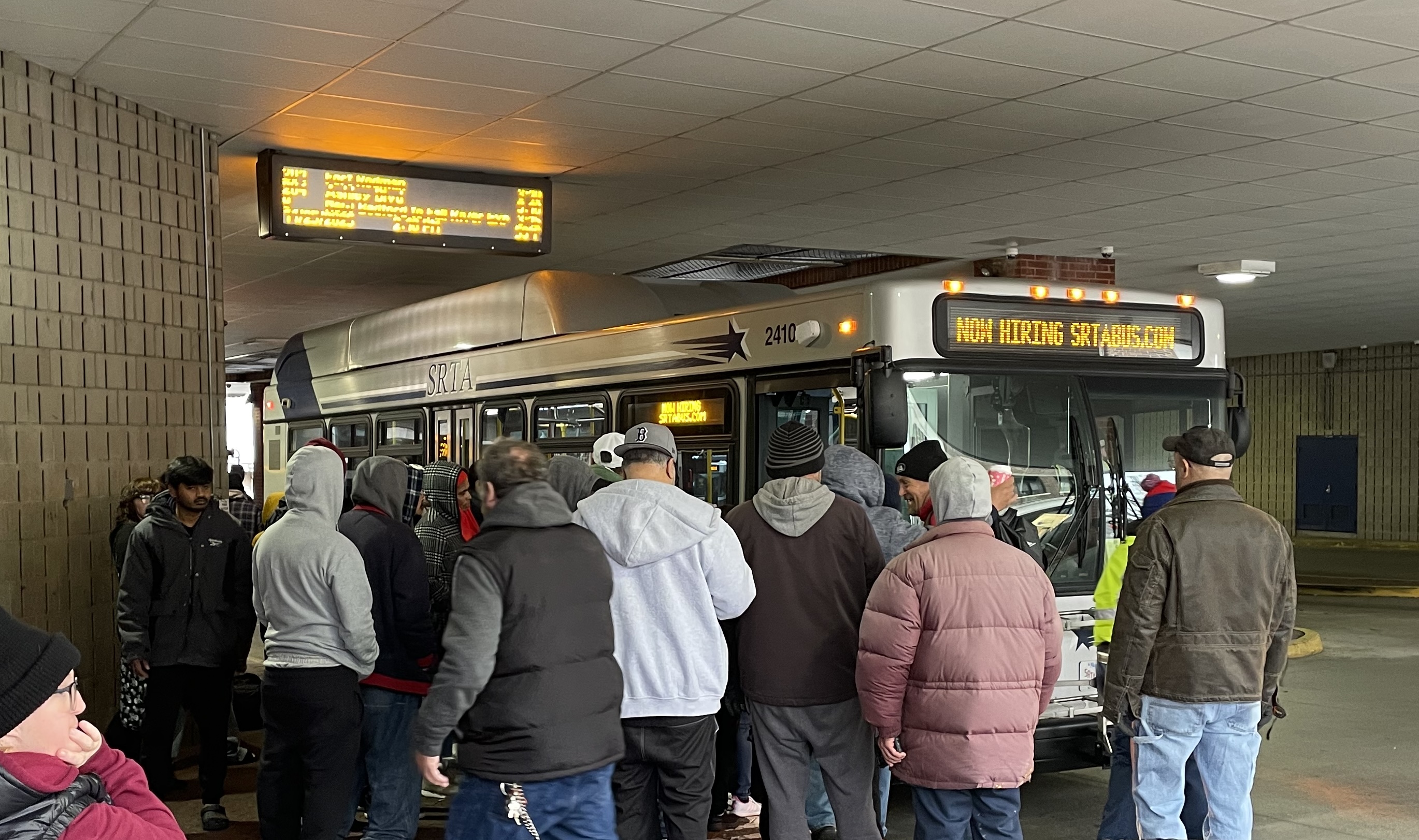A repaving project of the Fenway and Park Drive near the Landmark Center is drawing criticism from Boston-area cyclists for installing new unprotected bike lanes in dangerous, heavy-traffic locations where parking-protected bike lanes appear to be feasible.
The project includes the intersection of Park Drive and Brookline Avenue. In February, a driver at that location killed Paula Sharaga, 69, a children's librarian at the Coolidge Corner Library, by driving a cement truck over her.
In a repaving project that's wrapping up this week, sections of Fenway and Park Drive south of Brookline Avenue were repaved and re-striped. One motor vehicle lane was removed from Fenway to create a buffered bike lane without physical separation from the roadway, and on Park Drive, a new bike lane has been painted in the "door zone" next to parked vehicles.
Missed opportunity by @BostonBTD on Park Dr. to add in a protected #bikelane. Also wished the bike lane didn’t abruptly end at Brookline Ave. @CityOfBoston @marty_walsh #BikeBoston pic.twitter.com/202QUJQnlG
— Elena Pilar (@elenita_pilar) July 7, 2019
The agency in charge of these streets is not the City of Boston or the state Department of Transportation, but the Department of Conservation and Recreation (DCR). Unlike city-run restriping projects like last year's reconfiguration of Columbus Avenue near Northeastern University, the DCR's repaving and restriping programs operate with comparatively little public input.
"As part of the agency’s Pavement Management and Resurfacing Program, DCR regularly meets with stakeholders," wrote the agency's Press Secretary, Olivia Dorrance, in an email message. "On Thursday, April 11, 2019, agency officials conducted a regularly scheduled meeting with members of the Urban Parkways and Pathways Committee, which includes the Boston Cyclists Union, Livable Streets, Mass Bike, Walk Boston, and the Metropolitan Planning Council, to discuss the DCR’s plans to improve Fenway area roadways, among other paving and road diet projects."
Becca Wolfson, executive director of the Boston Cyclists Union and a StreetsblogMASS board member, says that her organization shared concerns about the agency's restriping proposal at that meeting, but their suggestions were largely ignored in the implementation.
"They’re making changes that don’t comply with MassDOT’s safety and design standards. They should at least be accountable to that," said Wolfson. "And certainly it's a bigger concern on roads where people are injured or killed. Boston has a rapid response protocol (to install safety improvements when someone is seriously injured in a crash) and DCR does not.”
The Cyclists Union is responding with a "people-protected bike lane" demonstration on Fenway near Brookline Avenue during the Thursday morning rush hour.
"For the Fenway side we want them to add physical separation," says Wolfson. "We also really want them to change some of the intersections - where the lanes start and end, DCR hasn’t given the same safety considerations that any other agency would, and the majority of bike crashes occur at intersections."
But Wolfson says she also wants to start a conversation about whether DCR should be maintaining roadways at all, or whether responsibility for these streets should be transferred to the MassDOT.
"Unfortunately, we don’t think that DCR has the resources or capacity to design safe streets," says Wolfson. "They don’t have a safety ethos in their agency, and we want to change that.”






